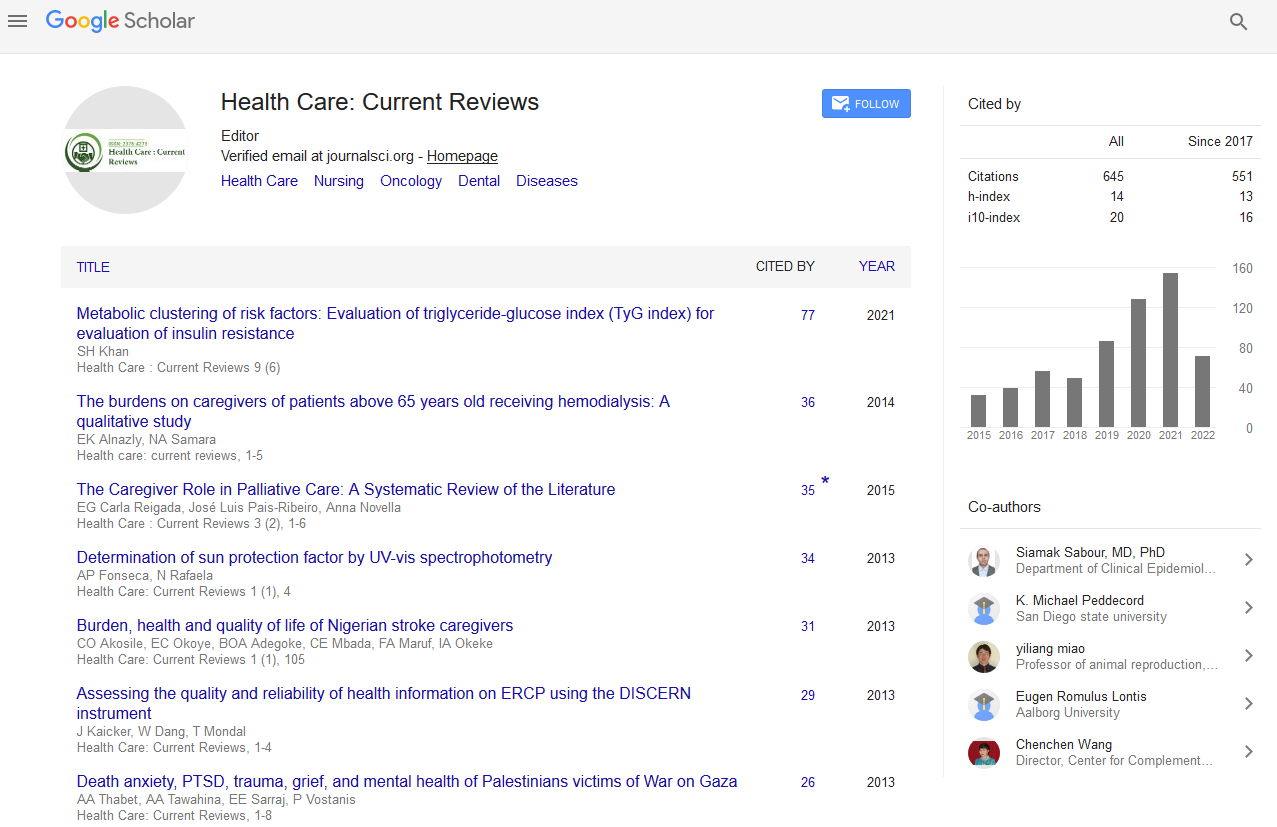PMC/PubMed Indexed Articles
Indexed In
- Open J Gate
- Academic Keys
- RefSeek
- Hamdard University
- EBSCO A-Z
- Publons
- Geneva Foundation for Medical Education and Research
- Google Scholar
Useful Links
Share This Page
Journal Flyer

Open Access Journals
- Agri and Aquaculture
- Biochemistry
- Bioinformatics & Systems Biology
- Business & Management
- Chemistry
- Clinical Sciences
- Engineering
- Food & Nutrition
- General Science
- Genetics & Molecular Biology
- Immunology & Microbiology
- Medical Sciences
- Neuroscience & Psychology
- Nursing & Health Care
- Pharmaceutical Sciences
Analysis of relationship between associate degree studentâ??s self-confidence in learning and their perceived presence of 5 instructional design characteristics
10th Asia Pacific Global Summit on Healthcare
March 12-14, 2018 Singapore
Geetha Kada
Montgomery College of Nursing, USA
Posters & Accepted Abstracts: Health Care Current Reviews
Abstract:
Increasing patient acuity and complex health care demands is the need for preparing competent graduate nurses. However, reduced availability of clinical sites exists translating to difficulties obtaining patient care experiences for nursing students. This ongoing issue demands educators to seek alternative teaching strategies. High-fidelity simulation experiences can provide a learning environment very similar to the clinical setting. The purpose of this descriptive correlational quantitative research study was to examine what relationships, if any, existed between associate degree nursing students�?? self-confidence in learning and their perceived presence of five instructional design characteristics in a high-fidelity simulation learning experience. The nursing student�??s perceived experiences were measured by the NLN Self-Confidence in Learning and Simulation Design Survey instruments. Study participants were asked to rate the level of importance of each variable (Self-Confidence and Simulation Design Instruments) on a Likert scale with the following rating: 1=strongly disagree, 2=disagree, 3=undecided, 4=agree and 5=strongly agree. The results of this study identified students�?? perceptions on the importance of realism and debriefing (feedback/guided reflection) in a simulation experience. Additional findings highlighted the importance to students of definitive objectives and information, which influence their self-confidence in learning within a simulation learning environment. It is evident that the use of simulation as an educational tool is becoming more prevalent in the health care settings. This is especially important in response to the growing shortage of accessible clinical sites and available faculty. The findings of this study support the need for more quantitative research to evaluate the use of high-fidelity simulation experiences on nursing students learning outcomes. geetha.kada@montgomerycollege.edu


